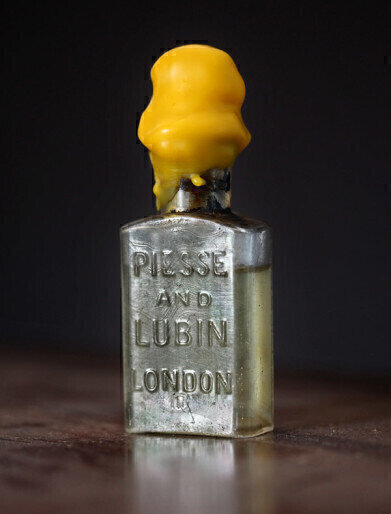GC, MDGC
How to Recreate 150 Year-Old Perfume
Oct 30 2014
A perfume believed to be at least 150 years old has been successfully recreated and made available for commercial sale due to the wonders of gas chromatography.
The fragrance, originally created by now-defunct perfumers Piesse & Lubin of London, was found among the remains of the Civil War Blockade Runner Mary Celestia (not to be confused with the abandoned ship Mary Celeste) after a hurricane in 2011 disturbed its resting place.
It was discovered along with a bottle of cologne, several pairs of shoes and some premium-quality wine – all luxury goods which were banned in the American South during the Civil War and as a result of which, would fetch a high price as contraband. Their hiding place in the hull of the ship was chosen to fool customs officers, but after the ship struck a reef and sank, ended up thwarting a far more formidable foe – the ravaging effects of time and nature.
Blast from the past
The odds of such merchandise surviving intact were surely very short, but survive they did. Shortly after, they were delivered into the hands of Isabella Ramsay-Brackstone, Director of the Bermuda Perfumery and Jean-Claude Delville, one of the foremost drom perfumers.
Mr Delville and his colleague Lionel Nesbitt then used the scientific method of gas chromatography to identify the exact constitutional makeup of the scent. Chromatography works by separating out a compound in its individual components by transforming it from a liquid or solid state into a gaseous one. For more information on the basics of the process, see the article, How Does Chromatography Work?
The results of the investigation surprised Mr Delville and his team. The aroma they isolated contained primarily zesty citrus and grapefruit notes, giving it a fresh fragrance and a whole host of supporting smells, including amber, rosewood and neroli.
After identifying the various components which went into its composition, the team at Bermuda Perfumery set about creating a replica fragrance. The one which went on sale earlier this month is an approximate 80% match for the original, due to the constraints on certain elements going into perfume production these days – for example, the immoral antiquated use of ambergrise (a threat to the survival of whales). 1,864 limited edition bottles have been manufactured, in memory of the year that the Mary Celestia sank.
Chromatography Bringing Back Forgotten Worlds
The recreation of this 150-year-old perfume is a fascinating window into our past, allowing us to smell and experience a fragrance from another century and another time altogether. In the words of of Ramsay-Brackstone, “This perfume waited 150 years to be worn. And now, finally, it can be,” – all thanks to chromatography.
It’s not the first time the process has allowed us to understand worlds long forgotten to us. Earlier this year, a team from the University of York used chromatography to identify the bandaging on an Egyptian mummy as being around 6,500 years old – 2,000 years older than previously assumed. To read more about this startling discovery, check out the article How Old Are Mummies?
Photo credit: Chris Burville for LookBermuda
Digital Edition
Chromatography Today - Buyers' Guide 2022
October 2023
In This Edition Modern & Practical Applications - Accelerating ADC Development with Mass Spectrometry - Implementing High-Resolution Ion Mobility into Peptide Mapping Workflows Chromatogr...
View all digital editions
Events
ACS National Meeting - Fall 2024
Aug 18 2024 Denver, CO, USA
Sep 04 2024 Chiba, Tokyo, Japan
Sep 04 2024 University of Warwick, Coventry, UK
Sep 10 2024 Rockville, MD, USA
Plastics Recycling World Expo Europe
Sep 11 2024 Brussels, Belgium














